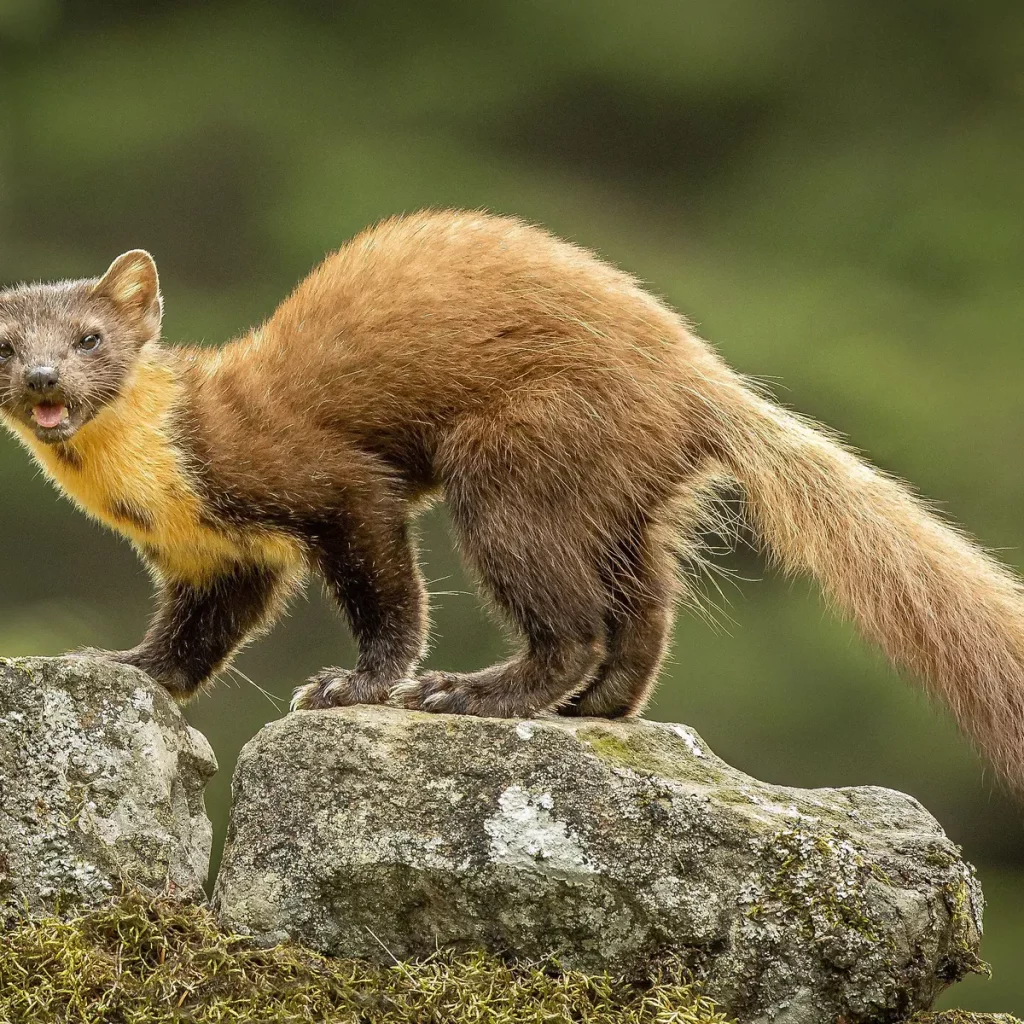Yes, pine martens are known to hunt and prey on grey squirrels (Sciurus carolinensis) in some regions where their ranges overlap, such as the United Kingdom. Grey squirrels are an introduced and invasive species in the UK, and their populations have had detrimental effects on the native red squirrel (Sciurus vulgaris) population.
Pine martens play a beneficial role in controlling gray squirrel populations. Gray squirrels are generally larger and more competitive than red squirrels, and their presence can lead to declines in red squirrel numbers. Pine martens are effective predators of gray squirrels and can help reduce their numbers, thereby indirectly benefiting red squirrels and promoting their conservation.
The impact of pine martens on gray squirrels varies by region and the availability of other food sources. In areas with a high density of gray squirrels and suitable habitat for pine martens, predation by pine martens can have a positive effect on the conservation of red squirrels. However, it’s important to note that the presence of pine martens alone may not completely eradicate gray squirrel populations. Conservation efforts often involve various strategies to manage invasive gray squirrels and support native red squirrel populations.
Do pine martens hunt grey and not red squirrels?
Pine martens do indeed hunt both grey squirrels and red squirrels, but their preference for one over the other can be influenced by various factors. Here are some reasons why pine martens may be more likely to hunt grey squirrels in certain circumstances:
- Size and Competition: Gray squirrels are generally larger and more competitive than red squirrels. Gray squirrels often outcompete red squirrels for resources, which can lead to a decline in red squirrel populations. Pine martens may target gray squirrels because they provide a more substantial and easier-to-catch food source.
- Abundance: In some areas, gray squirrels may be more abundant than red squirrels. Pine martens may primarily prey on the more readily available food source in their habitat.
- Foraging Behavior: Gray squirrels are often more ground-dwelling and less agile in trees than red squirrels. This may make them more vulnerable to predation by pine martens, which are skilled climbers and hunters.
- Dietary Diversity: Pine martens are opportunistic feeders and have a diverse diet that includes small mammals, birds, insects, fruit, and carrion. While red squirrels are part of their diet, pine martens may adapt their diet based on the availability of different prey species in their environment.
It’s essential to note that pine martens do not exclusively target grey squirrels and will also prey on red squirrels when the opportunity arises. Their predation behavior is influenced by a combination of ecological factors, including the abundance and behavior of both squirrel species and the overall food availability in their habitat.
How do red squirrels escape from pine martens?
Red squirrels (Sciurus vulgaris) have evolved a range of behaviors and adaptations to help them escape from potential predators, including pine martens. Here are some ways in which red squirrels can evade pine martens and other predators:
- Tree Climbing: Red squirrels are exceptional climbers, and they often take refuge in trees when they sense danger. They can leap from branch to branch, use their agility to navigate tree canopies, and create distance from ground-dwelling predators like pine martens.
- Nesting: Red squirrels build nests, known as dreys, high in the trees. These nests provide a secure hiding place where they can stay safe from ground predators. When threatened, they may quickly retreat to their dreys for protection.
- Camouflage: The reddish-brown fur of red squirrels can help them blend into the tree bark and foliage, making it harder for predators like pine martens to spot them when they are motionless or moving cautiously.
- Alertness: Red squirrels are known for their keen senses, especially their excellent vision and hearing. They can detect the presence of predators early and respond by fleeing or taking evasive action.
- Vigilance: Red squirrels often remain vigilant and alert when foraging, keeping an eye out for potential threats like pine martens. If they detect a predator, they may quickly move to a safer location.
- Distraction: Sometimes, red squirrels may engage in distraction behaviors when faced with a predator. They might vocalize loudly, act agitated, or even engage in a “chase-me” display to divert the predator’s attention away from their young or a hidden location.
While these behaviors can help red squirrels evade pine martens and other predators, it’s important to remember that predation is a natural part of their ecosystem, and not all encounters with predators end in successful escapes. Survival often depends on a combination of these behaviors, the squirrel’s individual characteristics, and the specific circumstances of the encounter.


